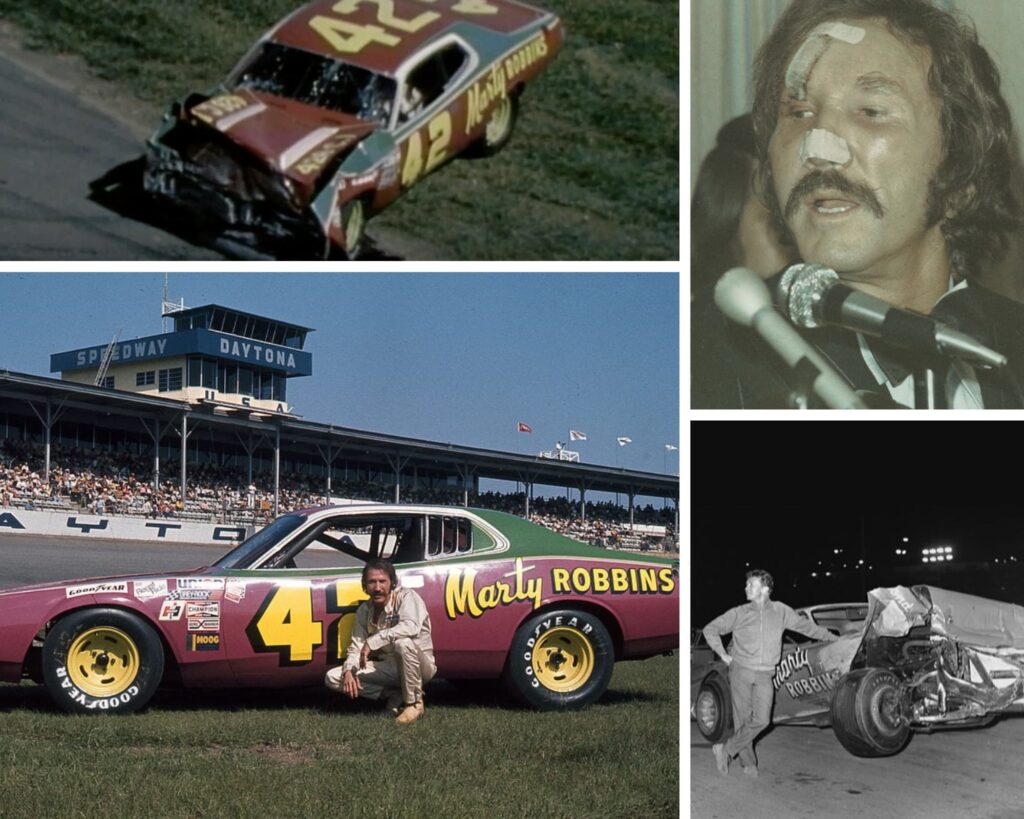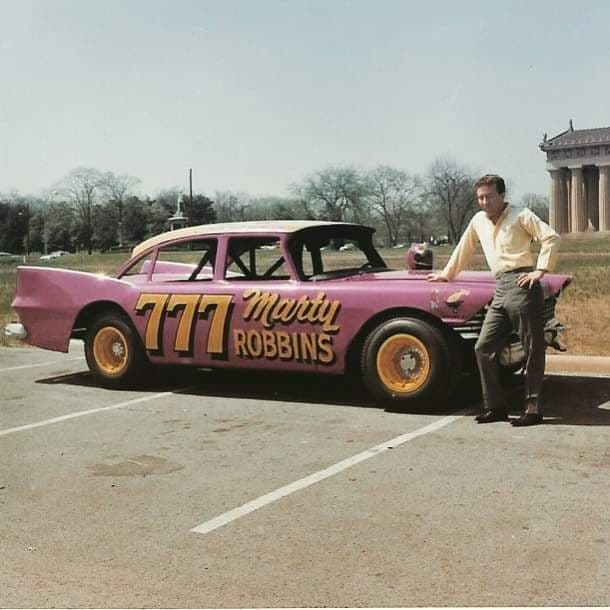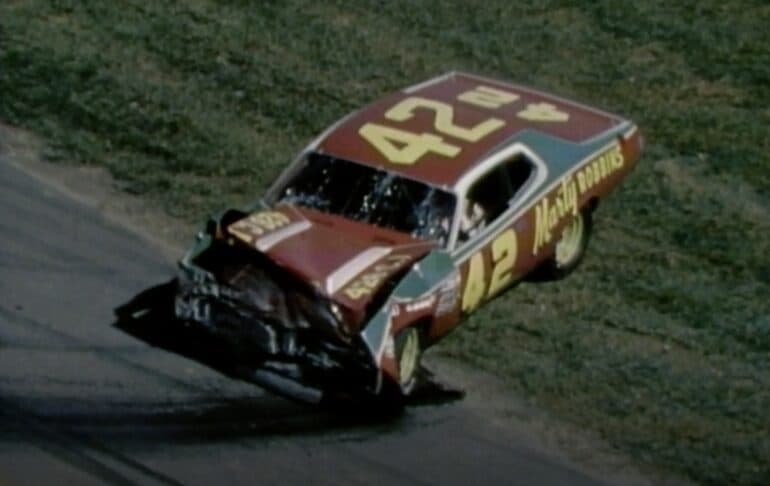
The fateful moment at the 1974 Charlotte 500, a split-second decision, a legacy that lives on forever.
Marty Robbins – the man the whole world knows for his warm country voice with classics like El Paso and A White Sport Coat – was, offstage, also a formidable NASCAR driver. His passion for speed began on the small dirt tracks of Nashville, behind the wheel of a 1934 Ford Coupe nicknamed “Devil Woman,” before moving up to NASCAR’s top divisions from 1966 to 1982. Over the course of roughly 35 races, he earned six top-10 finishes and one top-5 — all while pursuing a full-time career in music.

In 1972, a remarkable highlight of Robbins’ racing career came at the Winston 500 in Talladega: he drove more than 15 mph faster than his qualifying speed, leaving everyone stunned. NASCAR intended to award him the “Rookie of the Race,” but he candidly refused and even admitted he had removed the restrictor plate from the carburetor — an act of astonishing honesty.
Not stopping there, in 1974 at Michigan, he secured a top-5 finish — the best result of his career.
That very race etched Marty Robbins into history not only as an artist, but as a fearless driver. On the straightaway of Charlotte Motor Speedway, just after the second lap… Richard Childress and three other drivers were involved in a crash, leaving their cars blocking the track.
Marty, racing at nearly 160 mph, realized he couldn’t avoid the wreck: “I couldn’t hit them, because they might not be able to move when the impact came,” he later shared. In that split-second of reckless courage, he swerved straight into the concrete wall—instantly saving Richard Childress and the others ahead.
The grandstands fell silent for a moment, then erupted as he slowly emerged from the mangled car, carried out on a stretcher—an unspoken act of heroism.

The hero was far from “unscathed”: Marty Robbins suffered two broken ribs, a fractured tailbone, and a deep wound between his eyes that required 32–37 stitches.
A shaken NASCAR official remarked: “His actions saved at least one life and may have prevented others from being crippled. He could have been killed, but in that decisive moment, he chose to sacrifice himself rather than harm others.”
Looking at the scene, it was more than just a crash—it was the ultimate act of courage from a driver. His choice to hit the wall instead of plowing into the cars ahead wasn’t about being a movie hero, but about conscience and fair play. In racing, reputation is sometimes built through every brake, every split-second turn—and in that instant, Marty Robbins proved himself to be one of the most honorable drivers the sport has ever known.
It is no exaggeration to say he was not only a gifted artist but also a man of honor, sacrifice, and compassion—like the central hero of a western ballad, except this was real life, with smoke, roaring engines, and blood, skin, and scars etched into memory.
He continued to race into the early 1980s, with his final car being a Buick Regal (1981–82), before his passing from heart disease at the end of 1982. In 1983, NASCAR honored him with the Marty Robbins 420 at Fairgrounds Speedway in Nashville—a testament that the actions of this artist-driver left an indelible mark on the world of racing.